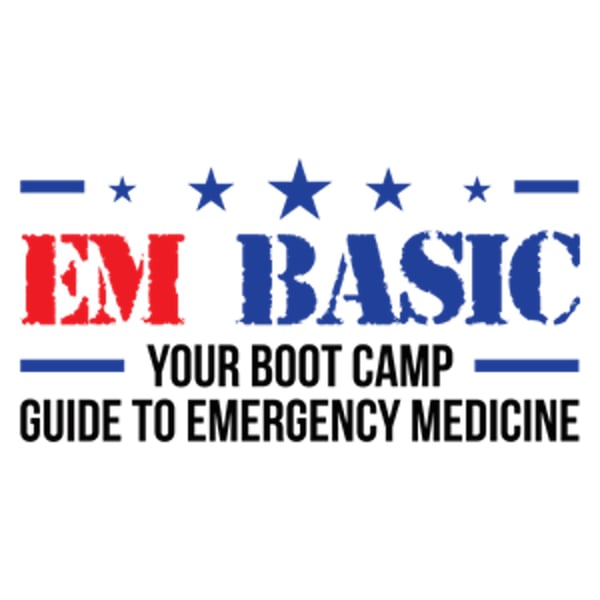Anaphylaxis Part 2- Airway
EM Basic
EM Basic LLC
4.6 • 665 Ratings
🗓️ 22 July 2013
⏱️ 16 minutes
🧾️ Download transcript
Summary
In this episode, we'll talk about how to manage the airway in patients with anaphylaxis or any other upper airway obstruction. These can be some of the most difficult airways to manage and we can run into trouble if we don't have a good plan ahead of time. Some of this is a little "advanced" and "cutting edge" but it's important to have as many tools in your arsenal when dealing with these critical airways. We'll review other options besides RSI to include awake intubation, delayed sequence intubation (DSI), and the awake cric.
Transcript
Click on a timestamp to play from that location
| 0:00.0 | This is Steve Carroll, and you're listening to the Amb Basic podcast. |
| 0:04.9 | This episode is part two for the anaphylaxis episode. |
| 0:08.0 | In this episode, we'll talk about the general approach to the airway in the patient with |
| 0:12.5 | anaphylaxis or really any upper airway obstruction. |
| 0:16.4 | We'll review a stepwise approach to these airways so we can do the right thing for the patient. |
| 0:21.9 | Some of the techniques I'll be talking about may be a little advanced and on the cutting edge |
| 0:25.8 | of clinical care, but I think it's important to always have these techniques in the back of |
| 0:29.9 | your mind. These airways can be the scariest airways that we encounter, so we need to be thinking |
| 0:35.3 | about our approach ahead of time and not leave it until |
| 0:38.2 | you have a critical patient in front of you. As always, this podcast is a representative of |
| 0:41.8 | the U.S. Army of the Fort Hood Post Command. So let's go back to that sick patient with |
| 0:47.0 | anaphylaxis. They have strider, they aren't moving air, and they look bad. You have given either |
| 0:52.6 | I.M. or IV epinephrine, and they don't seem to be |
| 0:55.9 | turning the corner. Anaphylaxis airways are some of the scariest airways out there, and you need to be |
| 1:01.5 | able to act decisively and with a plan in order to have a good outcome. Even though I'm talking |
| 1:07.0 | about airway planning after epinephrine, it's really something that has to occur at the |
| 1:11.6 | same time as the Epi administration. You need to be gathering your airway equipment and |
| 1:16.5 | formulating a plan in case the patient crashes. Let's go through a stepwise approach to the |
| 1:22.2 | ataphylaxis airway. So while we are reviewing this, keep in mind that the main issue in |
| 1:27.2 | anaphylaxis is upper |
| 1:28.6 | airway edema, so this thought process will work for any patient in whom upper airway obstruction |
| 1:33.8 | is concerned, such as angioedema. First, while we are gathering our equipment, we need to be |
... |
Please login to see the full transcript.
Disclaimer: The podcast and artwork embedded on this page are from EM Basic LLC, and are the property of its owner and not affiliated with or endorsed by Tapesearch.
Generated transcripts are the property of EM Basic LLC and are distributed freely under the Fair Use doctrine. Transcripts generated by Tapesearch are not guaranteed to be accurate.
Copyright © Tapesearch 2025.

